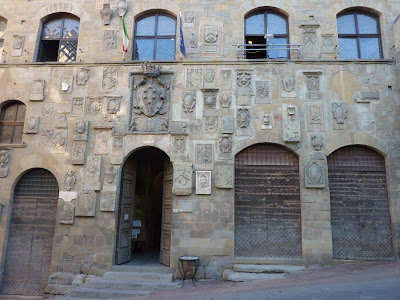 |
Facade
|
 |
Interior; even with hundreds or thousands of visitors, it is one of those buildings
that fascinates |
 |
Ceiling of the Piccolomini Library, one of several side chapels
|
 |
The Library celebrates the life of Pope Pius II and is covered
with Pinturrichio's giant 1509 frescoes |
 |
Michaelangelo's sculptures of Peter (above), Paul, Gregory,
and Pius, are almost lost among all the other masterpieces |
 |
One of Siena's more notable features is the prominence of in-laid marble scenes
all over the main floor; here, the slaughter of the innocents; elsewhere, a dozen Sibylls; and more biblical scenes |
 |
The 13th century pulpit, by Pisano and the father/son team of
Arnolfo and Giovanni di Cambio |
 |
Detail: damnation (of course)
|
 |
Ceiling; the effect of the light is very different from, say,
Chartres, but no less engaging |
 |
Altar
|
 |
In a chapel on the south side, four Bernini sculptures,
including his exquisite St. Jerome |
 |
Dome
|
 |
Closer up
|
 |
The nave is lined with busts of all the popes, into the 13th century (the pattern
repeats, however)... |













































